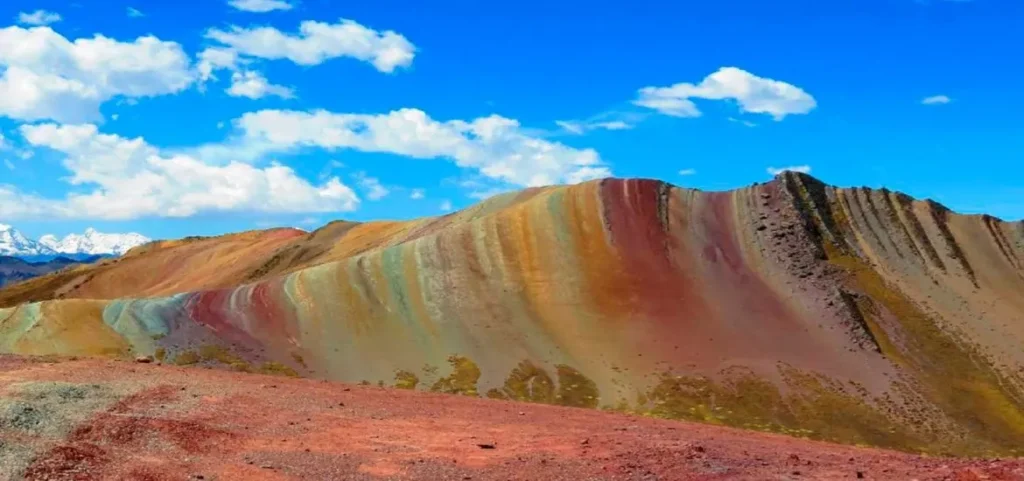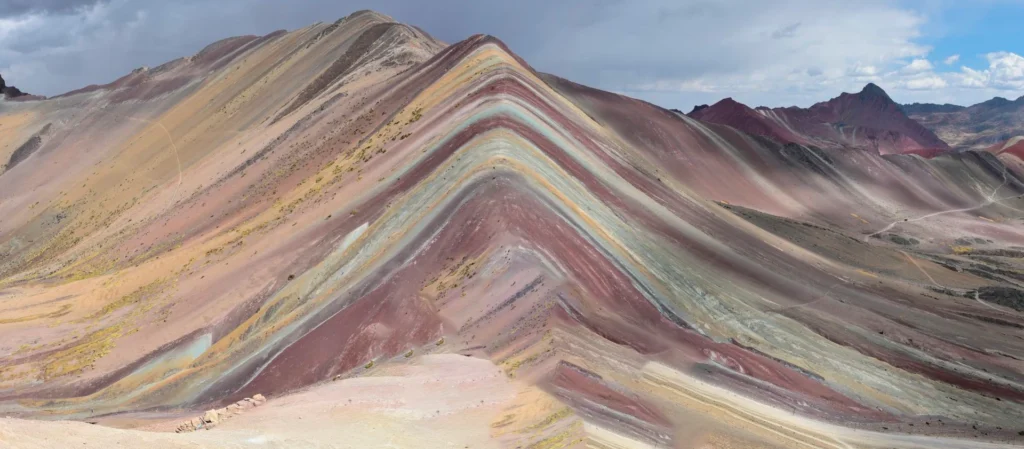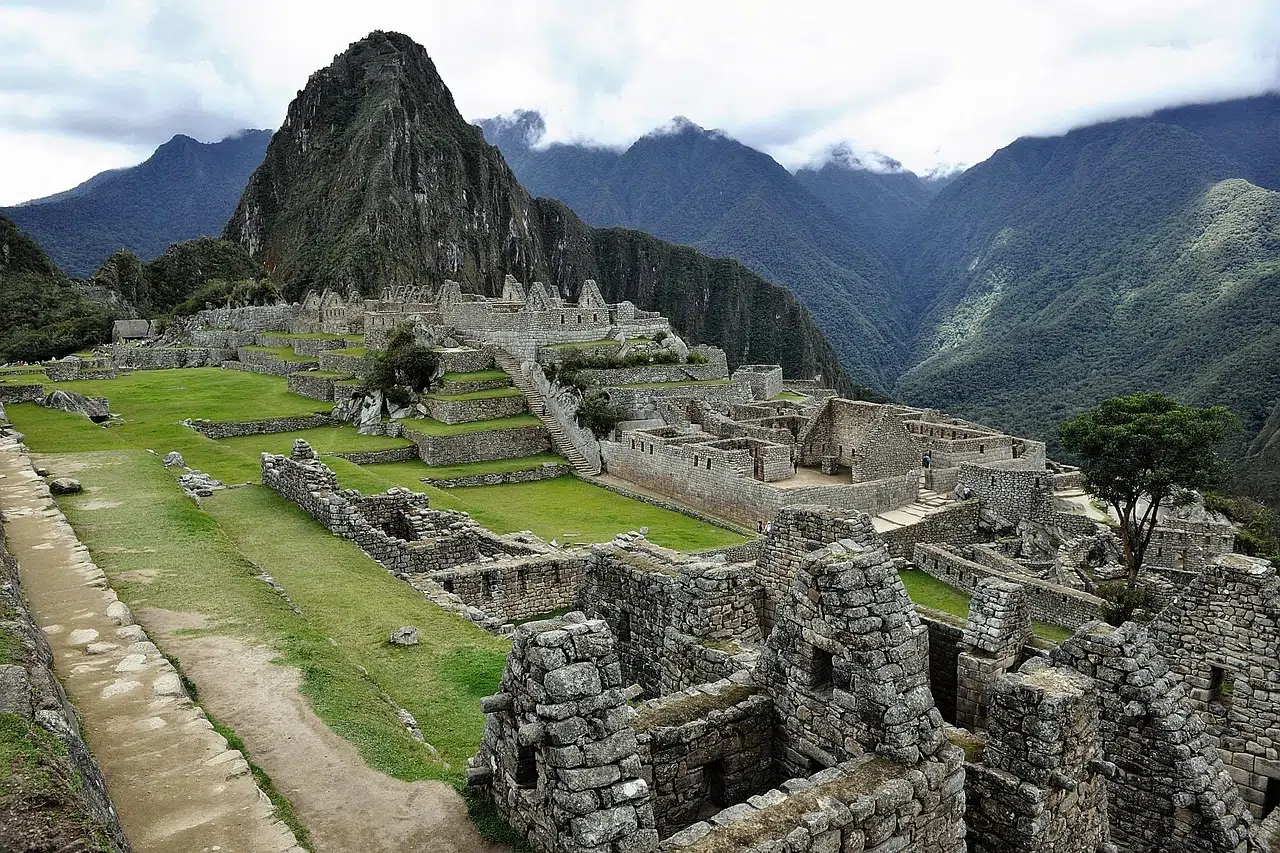For those planning a visit to Palcoyo Mountain, understanding and preparing for the high altitude is essential to ensure a safe and enjoyable trek. Located at around 4,900 meters (16,076 feet) above sea level, Palcoyo offers incredible panoramic views but also poses altitude-related challenges. This guide covers key information on altitude sickness, prevention tips, and steps to take if symptoms occur while trekking.
Table of Contents
Understanding the Altitude of Palcoyo
Palcoyo Mountain is slightly lower in elevation than the famous Vinicunca Rainbow Mountain but still sits at a high altitude that can impact visitors not accustomed to such heights.
- Altitude Level: The mountain’s elevation is approximately 4,900 meters (16,076 feet) above sea level.
- Impact of Altitude: At this elevation, oxygen levels are significantly lower than at sea level, which can affect breathing and physical performance. Visitors may feel symptoms of altitude sickness, even if they are generally fit.
You can also read:
- Waqrapukara Cusco: The Complete Guide to Peru’s Hidden Inca Fortress
- Palcoyo Cusco: The Complete Guide to the Alternative Rainbow Mountain
- The Ultimate Guide to Humantay Lake Cusco: Everything You Need to Know for Your Adventure
- The Ultimate Guide to Rainbow Mountain Cusco, Peru: Everything You Need to Know

Symptoms of Altitude Sickness to Watch For
Altitude sickness, or acute mountain sickness (AMS), occurs when the body has difficulty adapting to the decreased oxygen levels at high elevations. It’s important to recognize the symptoms early.
- Mild Symptoms: Common symptoms include headache, nausea, dizziness, and shortness of breath. These are generally manageable with rest and hydration.
- Moderate to Severe Symptoms: In more serious cases, symptoms can escalate to confusion, persistent vomiting, and difficulty walking. If severe symptoms occur, it’s crucial to descend to a lower altitude immediately.
- When Symptoms Appear: Altitude sickness symptoms can appear within a few hours of ascending to high altitudes. Be mindful of your body’s response as you arrive and begin your trek.
Tips for Preventing Altitude Sickness
Preventing altitude sickness starts with proper preparation. By taking specific measures, you can improve your body’s ability to adapt to the high altitude at Palcoyo.
- Acclimatize in Cusco: Spending a few days in Cusco (3,400 meters/11,152 feet) before heading to Palcoyo helps your body gradually adjust to the altitude.
- Stay Hydrated: Dehydration can exacerbate altitude sickness symptoms. Drink plenty of water before and during the trek to keep your body hydrated.
- Avoid Alcohol and Caffeine: These can lead to dehydration, so it’s best to limit alcohol and caffeine intake at least 24 hours before your trek.
- Consider Altitude Medication: Medications like acetazolamide (Diamox) can help the body acclimatize more easily. Consult with your doctor before your trip to see if this option is right for you.
- Eat Light Meals: Heavy meals can increase nausea at high altitudes. Opt for lighter, carbohydrate-rich foods to keep energy levels up without overloading your digestive system.
What to Do if You Experience Altitude Sickness on the Trek
If you start to feel unwell due to altitude sickness during the trek, it’s important to take steps to manage your symptoms.
- Stop and Rest: Take a break if you start to feel symptoms. Moving at a slower pace can help reduce strain on your body as it adapts to the altitude.
- Breathe Deeply and Slowly: Take deep, controlled breaths to maximize oxygen intake. If needed, take advantage of supplemental oxygen if you have it or if it’s offered by a tour guide.
- Stay Warm: High-altitude areas can be cold, which can worsen symptoms. Keep warm by dressing in layers and using thermal blankets if needed.
- Descend if Symptoms Worsen: If your symptoms escalate or you begin experiencing moderate to severe symptoms, it’s crucial to descend to a lower altitude as soon as possible. Severe altitude sickness can be dangerous if left untreated.
Preparing for the high altitude at Palcoyo ensures that you can fully enjoy the stunning views and unique landscape while staying safe and healthy. Following these tips can help prevent and manage altitude sickness, allowing you to make the most of your experience at this incredible Andean destination.

Palcoyo Mountain Altitude – Experience
During my visit, I learned firsthand how Palcoyo’s altitude shapes the experience: the crisp mornings at the trailhead (4,780m) left me breathless, but the short, flat hike to the viewpoints rewarded me with not one, but three vibrant rainbow mountains glowing under the Andean sun. Locals joke that the real challenge isn’t the trail—it’s resisting the urge to sprint for photos when the oxygen feels scarce!
Key Altitude Insights:
- Acclimatize first: Spend 2–3 days in Cusco (3,399m) to adjust.
- Coca leaves are lifesavers: Chew them slowly to combat dizziness—my guide swore they worked better than pills.
- Weather swings wildly: Even in dry season, temperatures range from -5°C to 15°C (23°F–59°F)—layer up!.
For those wary of extreme heights, Palcoyo’s manageable altitude and minimal elevation gain (just 150m to the summit) make it the perfect compromise between adventure and accessibility 28. Just don’t forget your sunscreen—UV rays at this elevation are unforgiving!
Pro Tip: Book a sunrise tour to see the stripes glow in golden light, before clouds (or crowds) roll in.
When the Andes Stole My Breath
I’ll never forget the moment I stepped out of the van at Palcoyo’s trailhead—4,900 meters (16,076 feet) above sea level—and felt like an elephant was sitting on my chest. As an experienced hiker, I’d scoffed at warnings about altitude sickness. “I’ve done Vinicunca before,” I’d bragged to my guide. But Palcoyo’s deceptively “easy” hike taught me a brutal lesson: altitude doesn’t care about your fitness level.
After three trips to Palcoyo (and one embarrassing oxygen-tank moment), I’ve compiled this no-nonsense guide to navigating its high-altitude challenges. Whether you’re a first-time visitor or a seasoned trekker, here’s how to enjoy those rainbow stripes without gasping for air like a stranded fish.
1. Palcoyo’s Altitude: By the Numbers
Key Elevation Points
- Trailhead: 4,780m (15,682 ft) — where most tours start.
- Main viewpoint: 4,900m (16,076 ft) — same as Everest Base Camp’s sleeping altitude.
- Stone Forest summit: 4,950m (16,240 ft) — the highest (and hardest) section.
Comparison:
- Cusco: 3,399m (11,152 ft) — your acclimatization hub.
- Vinicunca: 5,200m (17,060 ft) — Palcoyo’s “higher but easier” sibling.
My shock: Despite being 300m lower than Vinicunca, Palcoyo’s rapid ascent from Cusco hit me harder than expected.
2. Why Altitude Hits Hard at Palcoyo
A. The Science of Thin Air
- At 4,900m, oxygen levels are 40% lower than at sea level.
- Symptoms creep up fast: headache, nausea, and fatigue (my first signs).
B. Deceptive Factors
- “Easy” hike myth: Flat trails trick you into overexertion.
- Weather swings: -5°C mornings → 15°C afternoons stress your body.
- Rapid ascent: Most tours drive from Cusco to 4,780m in 4 hours—too fast for some.
Local insight: Quechua guides call altitude sickness “soroche”—their coca-leaf remedies work better than my fancy pills.
3. How to Prepare: Acclimatization Strategies That Work
A. Pre-Trip Must-Dos
- Spend 2–3 days in Cusco (3,399m) before attempting Palcoyo.
- Pro tip: Day-trip to Sacred Valley (2,800m) for gentler adjustment.
- Test yourself: Hike to Sacsayhuamán (3,700m) — if you’re panting, postpone.
B. On-Trail Survival Kit
- Coca leaves: Chew them (don’t swallow!) with llipta ash for 10x better absorption than tea.
- Diamox (acetazolamide): Start 24hrs pre-hike (side effect: you’ll pee constantly).
- Emergency oxygen: Many tours provide tanks—verify before booking.
My mistake: I skipped Diamox and spent 20 minutes wheezing at the Stone Forest while a 70-year-old local grandma breezed past me.

4. Recognizing Altitude Sickness: When to Turn Back
Mild Symptoms (75% of hikers)
- Throbbing headache (like a hangover ×10)
- Mild nausea (avoid looking at your hiking boots)
- Insomnia (even when exhausted)
Severe Symptoms (EMERGENCY) 45
- Ataxia: Stumbling like a drunk (seen a hiker walk into a boulder).
- Pink frothy cough: Pulmonary edema—descend immediately.
- Confusion: One trekker forgot her own name at the summit.
Guide’s rule: “If you can’t walk straight, you’re done”.
5. Palcoyo vs. Vinicunca: Altitude Showdown
| Factor | Palcoyo | Vinicunca |
|---|---|---|
| Max altitude | 4,950m (Stone Forest) | 5,200m (summit) |
| Recovery time | 1–2 hrs to adjust | 3+ hrs for most visitors |
| Horse option | None needed (trail is flat) | Mandatory for many (extra $30) |
| Crowd stress | Minimal (less psychological strain) | High (worsens symptoms) |
Verdict: Palcoyo wins for accessibility, but altitude still bites.
6. Local Secrets for Altitude Success
- Apacheta ritual: Stack a rock at the trail’s high point—Andean tradition for safe passage.
- Breathe like the Incas: Inhale deeply through nose, exhale forcefully through mouth.
- Eat light: Heavy meals increase nausea (stick to carbs like quinoa soup).
Final Thought: Respect the Mountain
Palcoyo’s altitude is no joke, but with smart prep—acclimatization, coca leaves, and pacing—you’ll focus on its rainbows, not your pounding head. As my Quechua guide said: “The mountains test you so the views taste sweeter.”



